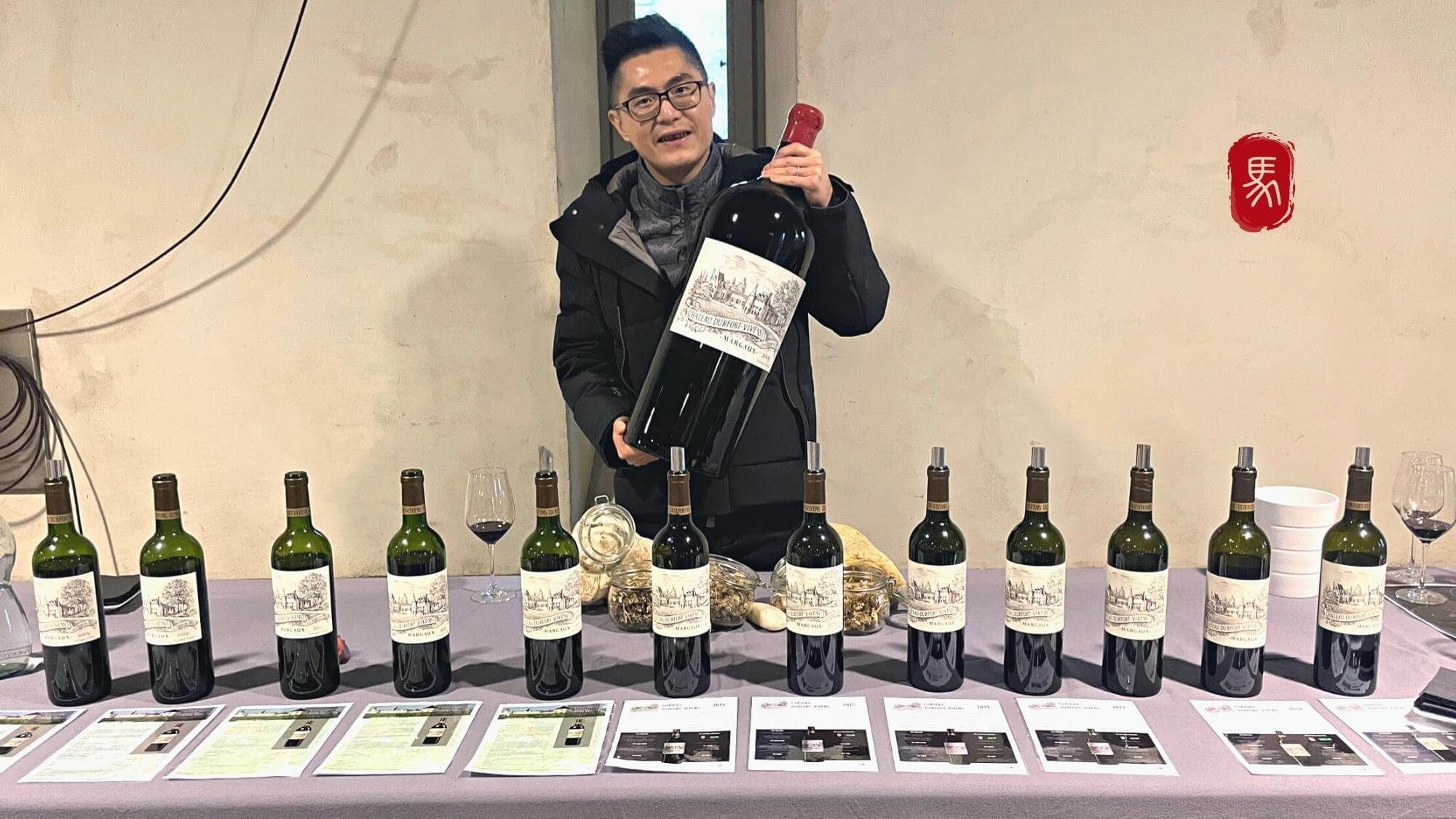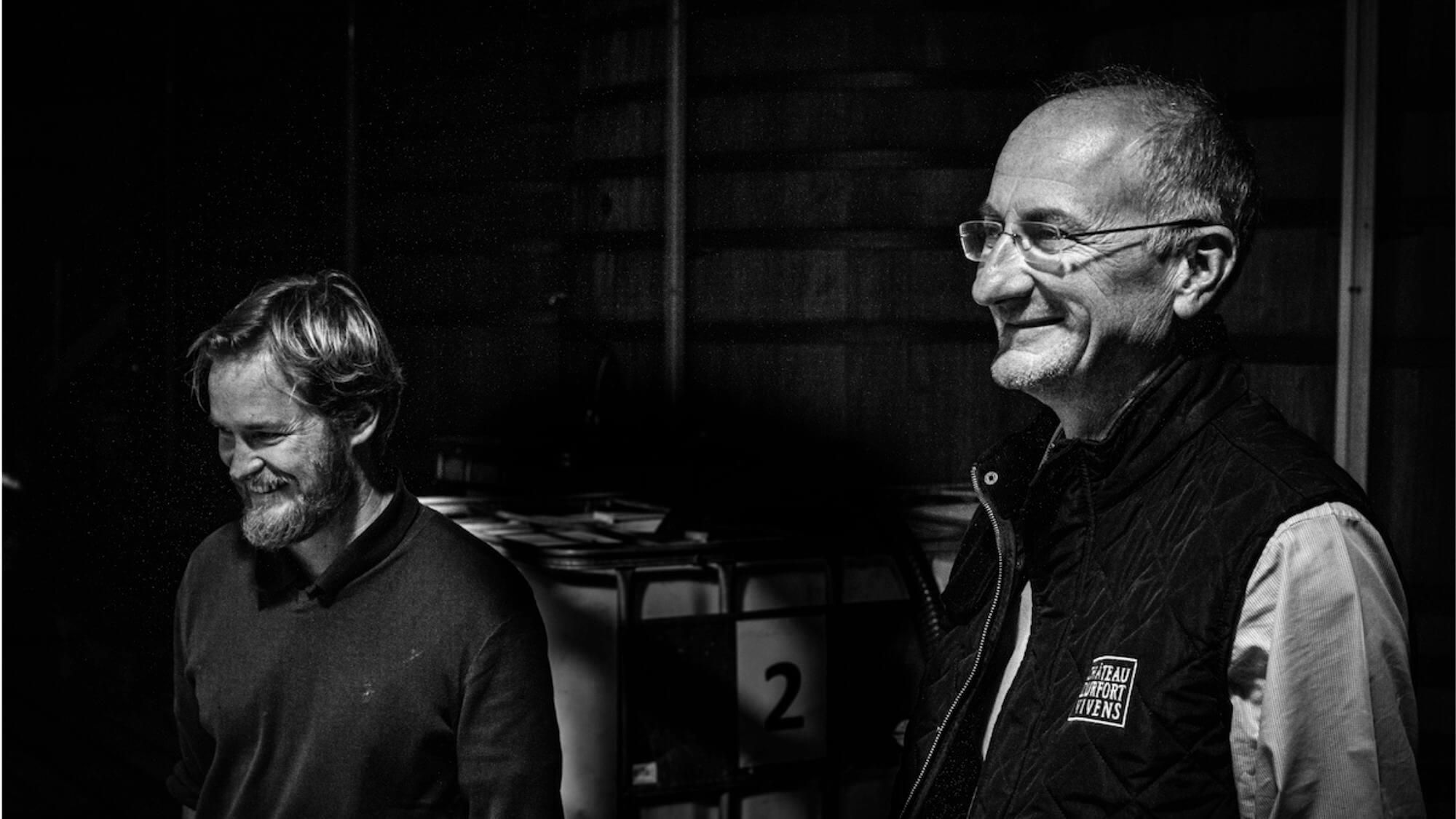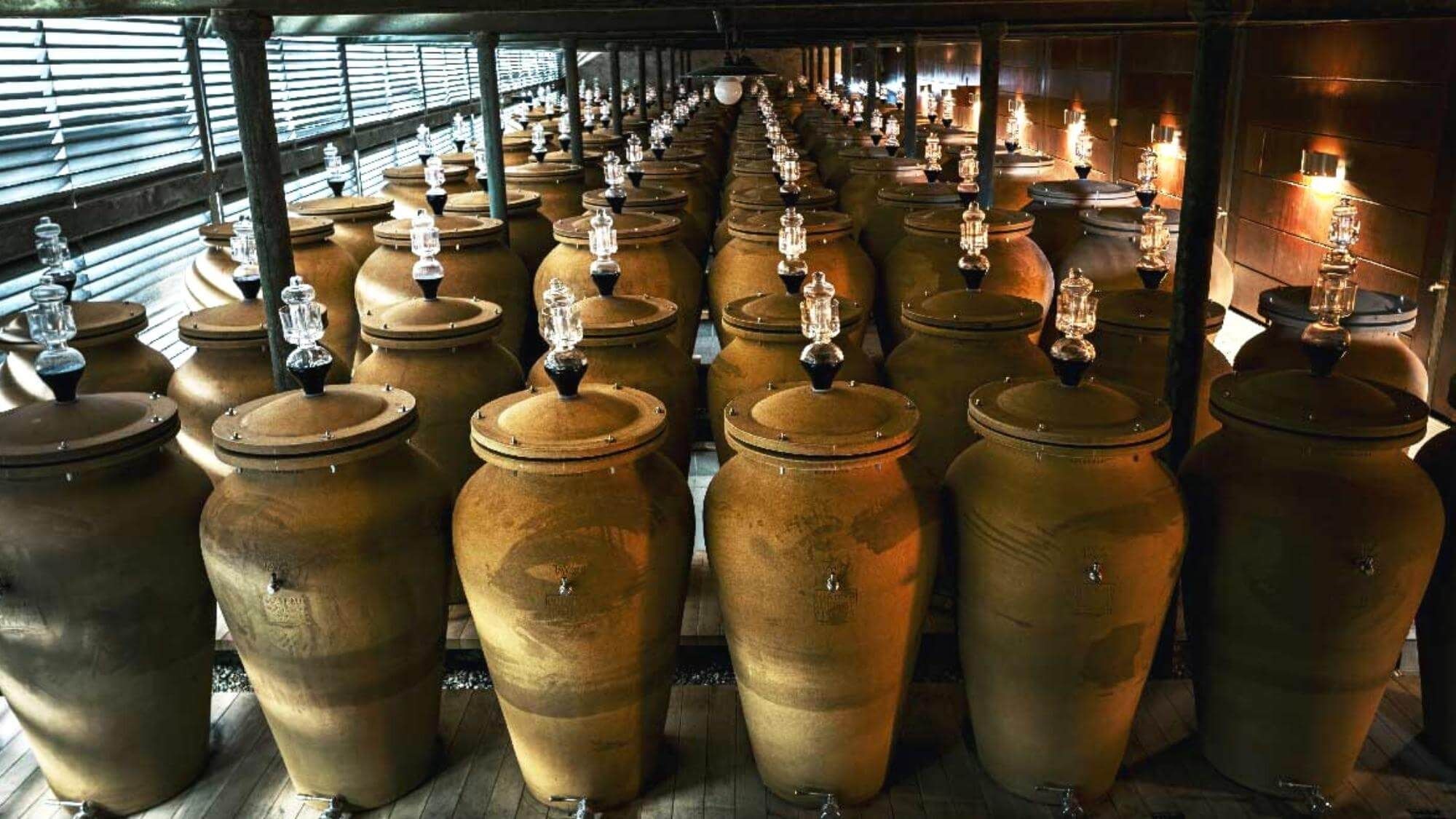AMA Vertical Tasting
Château Durfort-Vivens
(2009-2020)

If you were to ask me which winery has shown the most improvement among the Deuxième Cru en 1855 in the past decade, without hesitation, I would choose Château Durfort-Vivens.
Anyone who tasted this wine in the 1990s would know that the tannins and structure were quite tough back then, quite different from the clean and pure style that it exudes now. Owner Gonzague Lurton shared with me a funny story about the traditional style, which had me laughing until my stomach hurt. In French, the words “Dur” and “Fort” mean “hard” and “strong,” respectively. This gave rise to prejudice among some French consumers who believed that “Durfort” meant “hard and strong” wine.
However, if you have tasted recent vintages, you would know that this is no longer the case. Château Durfort-Vivens’ transformation, based on a super-high proportion of Cabernet Sauvignon, allows the wine to exude a passionate aura and demonstrates the freshness and precision of every fruity aroma. Although the wine has a strong sense of structure, the texture is creamier, which perfectly balances out the “ink’s symphony in balance” of Château Durfort-Vivens, as I understand it.
The question then arises, which vintages of Château Durfort-Vivens should consumers purchase?
I used to think that the turning point for this wine was the 2015 vintage. However, after a vertical tasting, I now believe that the answer lies in the 2014 vintage.
Gonzague told me that the winery has made many adjustments to its winemaking process since 2011. For instance, they have shortened the time of maceration to 17-18 days, as opposed to the 22 days of the 2009-2010 vintages. They have also limited any possible contact with the air during the winemaking process, thus maintaining the purity of the fruity aromas. Moreover, since 2011, they have kept the lees floating in the aging vessel, which is equivalent to the “lees aging” of red wines. This gives the wine a round palate to a certain extent. After the preparation in the 2012 and 2013 vintages, Château Durfort-Vivens reached an important milestone known as the “Point de révelation” (revelation point).

If the improvement in the winemaking process is just a side dish prepared by Gonzague for everyone, then “biodynamic” is his trump card. He told me that “biodynamic” cannot ensure good wines, but it can help grapes find their true self. Therefore, he abandoned formalism from the very beginning and drew a clear line with those so-called “biodynamic laws.”
Starting with 1 hectare of vineyard, he led his team to practice, summarize, and improve. After ten years of accumulation and summing up, the unique “biodynamic” system of Château Durfort-Vivens gradually emerged, like a budding flower with inexhaustible vitality.
However, consumers often only focus on the benefits of “biodynamic” without considering the difficulties in the growing process.
In 2018, a sudden outbreak of Downy Mildew swept through Bordeaux, dealing a fatal blow to the “biodynamic” wineries. Imagine seeing only a few fruits left on each bunch of grapes – these were the lifeblood of the entire winery. The winemaking director was ready to give up, but Gonzague’s words rekindled the fire inside him, urging the team to try something they were afraid to do before, even if it meant having no harvest.

As Nietzsche famously said, “What does not kill me, makes me stronger.” Château Durfort-Vivens found a new way to a new world in an attempt at self-salvation. Let us recall the difficulties that the winery faced in the 2018 vintage.
The winery workers hand-selected the remaining healthy grapes one by one, a laborious and effort-intensive task.
However, they soon realized that the number of grapes was too small to fill the entire fermenters. Leaving too much air would spoil the wine. The team was at a loss until Jacques Lurton, Gonzague’s cousin and the head of Vignobles André Lurton, came up with a bold idea: fermenting in small amphoras. Obtaining the amphoras was challenging, but it led to a new problem: the original equipment for pumping over was unsuitable for use in the amphoras. The only way to complete the maceration was through pigeage.
When winemaker Léopold discussed this experience, he joked that the 2018 vintage was made without any machinery or electricity. It was the quietest winemaking season he had ever experienced, and he could listen to the birds chirping while making wine. Interestingly, in the process of fermenting in the amphora, the winery discovered that the expression of fruity aromas was exceptionally pure, and extraction could be controlled more precisely through pigeage. This process added more softness to the wine and made Château Durfort-Vivens brighter and clearer.
In addition, the winery introduced a new basket press in the 2018 vintage. Compared with the strong and astringent traditional press wine, this new technology could make tannins creamier while maintaining intensity. In my opinion, this is the key to maintaining the “ink’s symphony in balance” of Château Durfort-Vivens.

This unexpected challenge allowed Château Durfort-Vivens to undergo a transformation, shining bright in the excellent 2019 and 2020 vintages and becoming a prominent new star in the Médoc Grand Cru Classé family.
Château Durfort-Vivens has launched three Single Vineyard wines since the 2019 vintage, all of which are fermented with natural yeasts.
- Les Plantes offers a fresh style with 2/3 of its aging done in amphoras and 1/3 in old oak barrels.
- Le Plateau, born in a vineyard with gravel and sandy soil in Soussans village, is a sweet style with 1/3 amphora aging and 2/3 oak barrel aging (10% new oak).
- Le Hameau is a strong and intense style, originating from a traditional gravel highland in Cantenac village, with 1/3 amphora aging and 2/3 oak barrel aging (10% new oak).
For those who are fond of trying new wines, I suggest tasting these three Single Vineyard wines at the same time and adding a bottle of Grand Vin of the same vintage for comparison. This will help you fully understand why I always say, “The terroir of Bordeaux is hidden in blends.”
This is the Bordeaux story that I am sharing with you today. I hope that those who enjoy life and appreciate details will find it appealing.
Until next time, cheers!

